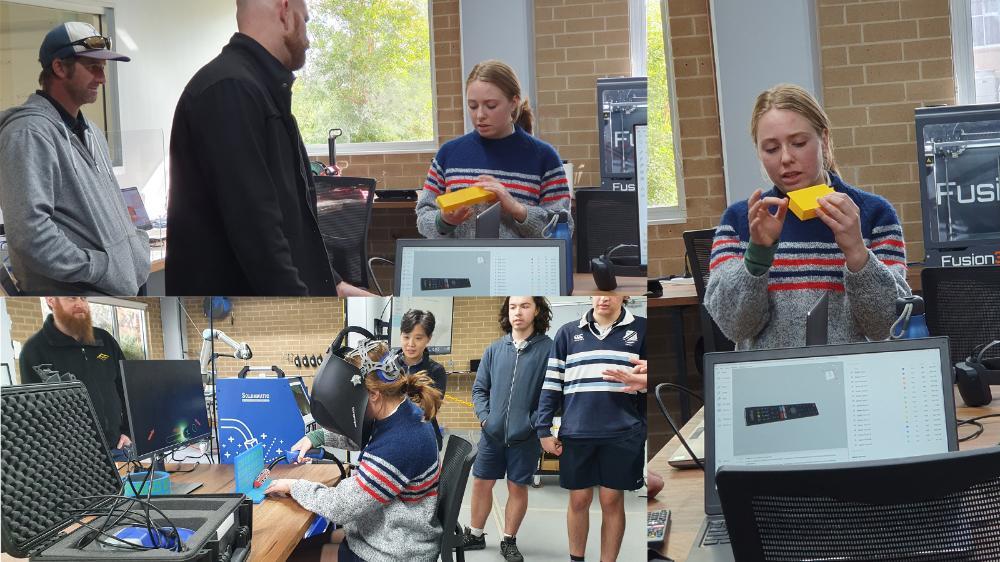Tackling gender inequality through a global pandemic
Putting women and girls at the centre of efforts to recover from COVID-19
September 9, 2021
Unless you’ve been living under a rock, you would have seen the growing number of stories on the news in Australia about gender equality and the under-representation of women sitting in senior roles in businesses, politics, and STEM.
Please note: as of June 2025, the Industry 4.0 hub at Shoalhaven is no longer operational.
Dr Emily Yap is a Research Engineer at the Industry 4.0 Hub and a committee member of the Women’s Research Engineers Network (WREN). The Industry 4.0 Hub and WREN were established less than a year apart and the timing couldn’t be more perfect. In a time where the world is challenged with a global pandemic that has worsened pre-existing gender inequalities, it is even more critical now to “put women and girls at the centre of efforts to recover from COVID-19”, as said by the UN Secretary-General António Guterres [1-3]. Aligned with targeting the UN Sustainable Development Goal 5 (Gender Equality) and Goal 9 (Industry, Innovation and Infrastructure), WREN and the Industry 4.0 Hub are platforms to address and reduce barriers for women to enter and advance in a STEM career.
A report from the Australian Academy of Science found that 59% of women remain in STEM because of their personal passion yet 36% of women leave their careers in STEM because of a lack of opportunities [4]. These opportunities tend to come in the form of successful grant funding and projects. As women are less likely to be awarded, it leads to lower productivity, which is typically assessed as publications. WREN is a means to tackle the all-too-familiar “leaky pipeline” where an increasing number of women leave STEM fields throughout the career trajectory from entry-level to senior positions in academia or the workforce. This “leaky pipeline” behaviour is a result of several barriers such as sociocultural norms that has sustained over many decades, as well as systematic obstacles that has led to a lack of recognition and promotion of women’s contributions to STEM.
What is special about WREN is that women, especially those in their early-mid research careers, can create their own opportunities by connecting globally, sharing knowledge, and fostering international collaborations. Especially where women tend to suffer from imposter syndrome, it is crucial that women feel supported and celebrate one another in a safe space. It also is an opportunity for men to open their eyes to see that women are highly skilled when given the chance. Ultimately, WREN is about bringing awareness of the gender disparity, particularly in academia, educating both men and women, and promoting initiatives and policies where equity, diversity and inclusion frameworks are created.
Unfortunately, the “leakage” can start as early as High/Secondary School where students in equity groups, such as women in non-traditional areas, those of low socioeconomic status or attending school in a non-metropolitan area, are greatly affected. The decline in student participation is characterised by lower levels of self-confidence and poor understanding of STEM concepts in real-world applications. Although statistics show that young women pursuing STEM at university have a high completion rate, a study, funded the National Centre for Student Equity in Higher Education, found that less than one in ten women commence university in a STEM degree [5].
Being situated in the Shoalhaven region, the Industry 4.0 Hub gives accessibility to students of equity groups to interact with technologies they could potentially use in their future careers and demonstrate the application of engineering and math skills in real-world tasks and projects. It also is a gateway for young students to connect with STEM professionals. The exposure broadens their perception of careers in STEM and see that career such as engineering is full of creativity and enjoyment.

Above students engage in future industries at the Industry 4.0 Hub in the Shoalhaven
For women in engineering, role models play a more important part. As a queer woman of ethnic minority, being a role model means:
- Reassuring and validating young women so that they want to enter a pathway into STEM
- Representing diversity to break stereotypes and so that students can relate their identity with someone who is working in STEM and have a sense of belonging
- Seeing a woman in her early-career who is still figuring out her career path
It has been said on multiple occasions that Australia’s innovation and economic growth relies on the STEM workforce. The Industry 4.0 Hub and WREN is established at a time where trends and tradition need to be intervened. By embracing equality, diversity and inclusion, it creates a better workplace, economy and future for young people who are finding their feet and for women trying to make a difference in the world.
References:
[1] United Nations, "Policy Brief: The Impact of COVID-19 on Women," ed: United Nations, 2020.
[2] "COVID-19: A Gender Lens," in Protecting sexual and reproductive health and rights, and promoting gender equality, ed. New York, U.S.A.: United Nations Population Fund, 2020.
[3] A. Guterres. "Put women and girls at the centre of efforts to recover from COVID-19." United Nations. https://www.un.org/en/un-coronavirus-communications-team/put-women-and-girls-centre-efforts-recover-covid-19 (accessed 7 September, 2021).
[4] Australian Academy of Science, "Impact of COVID-19 on Women in the STEM Workforce - Asia Pacific," 2021. [Online]. Available: science.org.au/impact-covid-women-stem-asia-pacific
[5] J. McMillan, S. Rothman, S. Buckley, and D. Edwards, "STEM Pathways: The impact of equity, motivation and prior achievement," National Centre for Student Equity in Higher Education, WA, Australia, 2021.
Please note: as of June 2025, the Industry 4.0 hub at Shoalhaven is no longer operational.